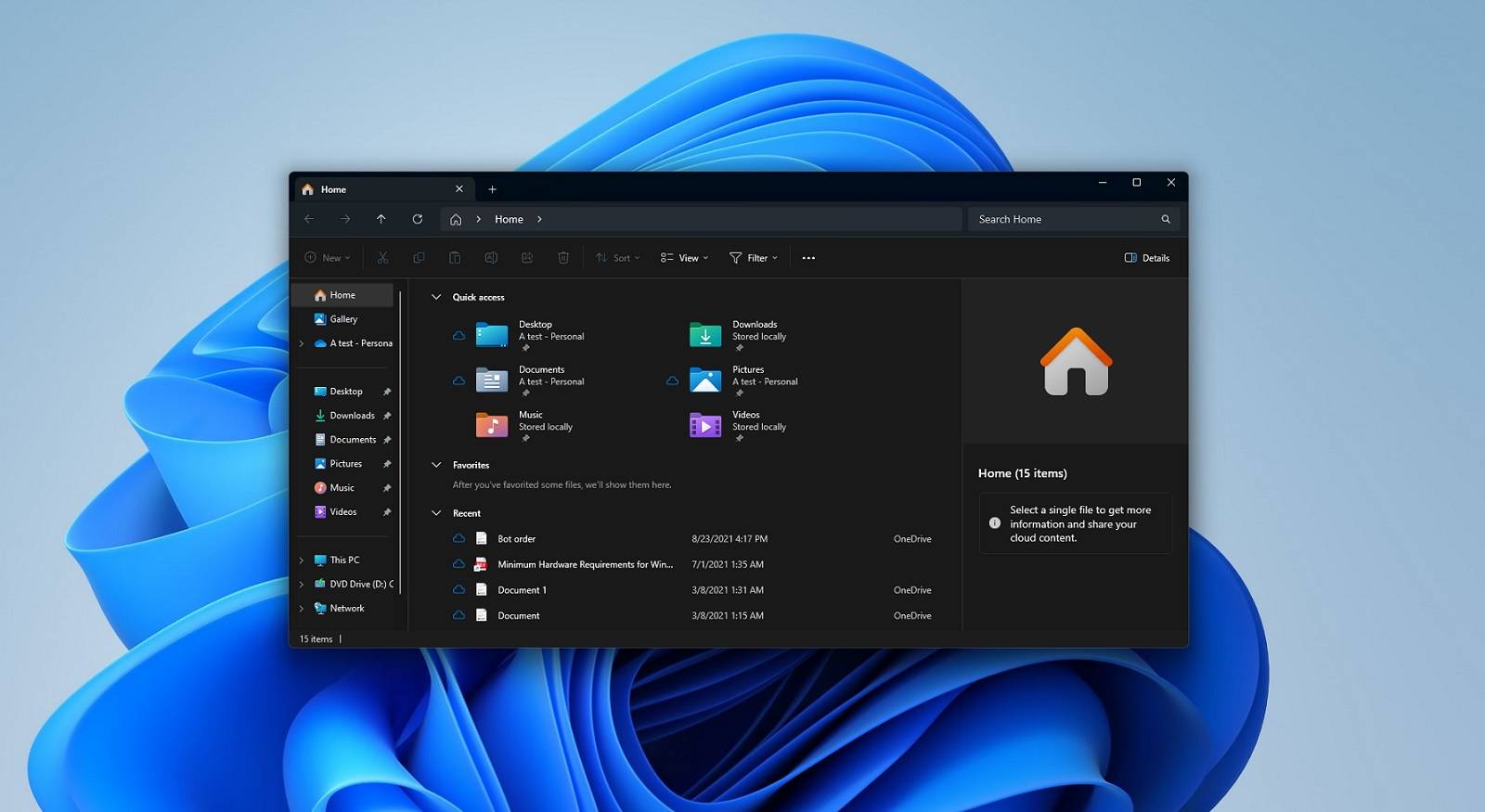Windows 11 has increased in size and is now nearly 10% larger than Windows 10
Nov 06, 2023 pm 08:17 PMThe size of the Windows 10 22H2 ISO is 5.8GB, which is about 6.24% smaller than the 23.2GB of Windows 7 version 586H11. This is a slight increase that can easily be overlooked. Still, when we look at the historical numbers, it paints a more important picture, which is the recent steady climb in the size of the Windows operating system.
For example, Windows 10 version 1703 (Creators Update) is less than 4GB, and we've witnessed steady growth with each subsequent update. When we hit Windows 2H5 (the last update) in March 2022, there was a noticeable increase, bringing the size to 8.<>GB.

A similar trend was observed in Windows 11. According to the data seen by Windows Latest, the ISO size of Windows 11 is:
- Windows 11 21H2 English version (all versions) 64-bit – 5.7GB
- Windows 11 22H2 English version ( All versions) 64-bit – 5.8GB
- Windows 11 23H2 English version (all versions) 64-bit – 6.24GB
The above data shows that the upward trend is obvious. Some were surprised to see Windows 11 ISO files in the 6.22GB range, but Windows 11 23H2 is 586.10% larger than the previous iteration of Windows 7, a continuation of that trajectory.
Windows 11 23H2 ISO size is 6.24GB, but what could be the reason?
The increase in Windows 11 23H2 size can be attributed to features like the new File Explorer built with WinSDK, which supports next-generation APIs and modern XAML controls. New home page in File Explorer or details pane (shows content preview in modern preview) and suggested sources are powered by XAML.

Similarly, the Windows 11 2023 update adds a new one in the Settings app The Home panel, which uses "cards" to display the most relevant information from Microsoft 365, including current status and benefits. You can view OneDrive's cloud storage directly from the Settings app.
Windows has grown in size and power with every feature update, but at the same time, it has been plagued by bloatware reports of software problems.
While the tech giant is trying to reduce bloat in the operating system by splitting up apps like Movies, TV and Maps, some think those efforts aren't enough.
The above is the detailed content of Windows 11 has increased in size and is now nearly 10% larger than Windows 10. For more information, please follow other related articles on the PHP Chinese website!

Hot Article

Hot tools Tags

Hot Article

Hot Article Tags

Notepad++7.3.1
Easy-to-use and free code editor

SublimeText3 Chinese version
Chinese version, very easy to use

Zend Studio 13.0.1
Powerful PHP integrated development environment

Dreamweaver CS6
Visual web development tools

SublimeText3 Mac version
God-level code editing software (SublimeText3)

Hot Topics
 What should I do if I can't delete a Windows system dll file? Tips for completely deleting stubborn dll files
Jun 12, 2024 pm 02:46 PM
What should I do if I can't delete a Windows system dll file? Tips for completely deleting stubborn dll files
Jun 12, 2024 pm 02:46 PM
What should I do if I can't delete a Windows system dll file? Tips for completely deleting stubborn dll files
 Lossless Scaling on Steam Deck OLED runs games at up to 2x FPS
Aug 26, 2024 am 10:07 AM
Lossless Scaling on Steam Deck OLED runs games at up to 2x FPS
Aug 26, 2024 am 10:07 AM
Lossless Scaling on Steam Deck OLED runs games at up to 2x FPS
 How to turn off Security Center in Windows 11
Mar 28, 2024 am 10:21 AM
How to turn off Security Center in Windows 11
Mar 28, 2024 am 10:21 AM
How to turn off Security Center in Windows 11
 Windows 10 vs. Windows 11 performance comparison: Which one is better?
Mar 28, 2024 am 09:00 AM
Windows 10 vs. Windows 11 performance comparison: Which one is better?
Mar 28, 2024 am 09:00 AM
Windows 10 vs. Windows 11 performance comparison: Which one is better?
 How to update the latest version of Bybit Exchange? Will there be any impact if it is not updated?
Feb 21, 2025 pm 10:54 PM
How to update the latest version of Bybit Exchange? Will there be any impact if it is not updated?
Feb 21, 2025 pm 10:54 PM
How to update the latest version of Bybit Exchange? Will there be any impact if it is not updated?
 deepseek web version entrance deepseek official website entrance
Feb 19, 2025 pm 04:54 PM
deepseek web version entrance deepseek official website entrance
Feb 19, 2025 pm 04:54 PM
deepseek web version entrance deepseek official website entrance
 Pi Node Teaching: What is a Pi Node? How to install and set up Pi Node?
Mar 05, 2025 pm 05:57 PM
Pi Node Teaching: What is a Pi Node? How to install and set up Pi Node?
Mar 05, 2025 pm 05:57 PM
Pi Node Teaching: What is a Pi Node? How to install and set up Pi Node?







